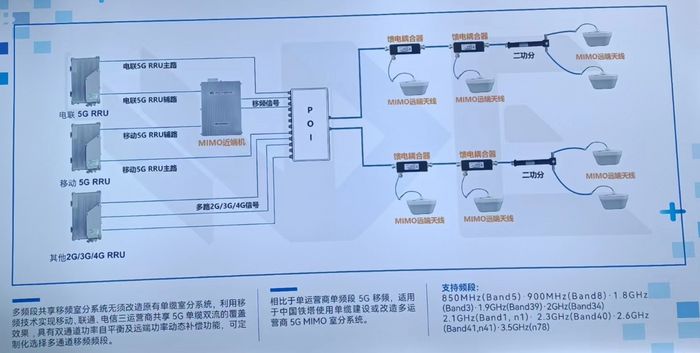
(1) Try to choose a wide-band antenna In the process of selecting the antenna for the room division system, the frequency band of the antenna should include the working frequency band of GSM, CDMA, WCD-MA, TD-SCDMA, WLAN, LTE and other wireless systems. In other words, it includes all mobile communication frequency bands from 800 to 2500MHz. Selecting a wide bandwidth can avoid the transformation of antenna feeder when adding a new wireless system, as well as avoiding the problem of repeated station entry and construction.

(2) Do not consider the diversity and beam assignment due to the indoor environment, narrow space, penetration loss, the use of diversity technology is like using anti-aircraft guns to fight mosquitoes, the improvement of the system performance is not obvious, but increase the system cost. General room division system antenna density, coupled with the complexity of the indoor environment, the user density, the use of beam configuration is like using a water gun in the crowd to spray a person, not necessarily able to accurately spray, not as good as a pot of water directly thrown over the past, but instead of being able to spray to the person. So in the indoor use of diversity and beamforming technology is not good, not very meaningful. Although TD-SCDMA supports smart antenna beam assignment, but in the indoor environment, there is no use of beam assignment.
(3) Select vertical polarisation antenna Horizontal polarisation of the radio wave propagation in close proximity to the surface of the ground, will produce polarisation current, the impact of the ground impedance can produce heat, so that the radio wave signal rapidly attenuation; and vertical polarisation of the radio wave is not easy to produce polarisation current on the surface of the ground, the town in order to avoid the significant attenuation of the energy, to ensure that wireless signals are propagated in the complex indoor environment effectively. Therefore, in indoor environments, antennas generally use vertical polarisation.
(4) Antenna selection should be adapted to the scene characteristics omnidirectional ceiling antenna used in the centre of the room indoors; wall-mounted plate directional antenna wall-mounted in a rectangular environment; high-gain directional antenna and leakage cable are generally used in lift shafts, tunnels, subways and other narrow closed spaces. Yagi antennas are suitable for use in environments with only one system; if multiple systems are combined, a wideband high-gain directional antenna, such as a wideband logarithmic periodic antenna, is required